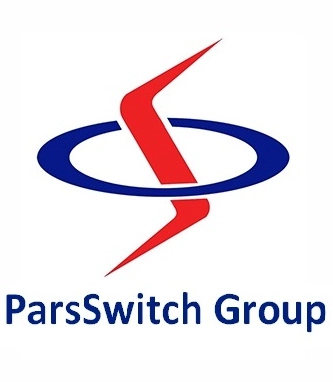It is important to note that some ratios will need information from more than one financial statement, such as from the balance sheet and the income statement. In order for the balance sheet to balance, total assets on one side have to equal total liabilities plus shareholders’ equity on the other side. For example, if a company has a lot of cash, low debt, and solid retained earnings, it suggests that it’s financially stable and can handle unexpected challenges. On the other hand, if a company has excessive debt or declining asset values, it may be a sign of financial trouble.
- When balance sheet is prepared, the liabilities section is presented first and owners’ equity section is presented later.
- If there is any change in one element, it must be accompanied by an equal change in another element to maintain the equation.
- While a balance sheet relates to a specific date, or a given point within an accounting cycle, an income statement is concerned about a particular period, or the time during an accounting cycle.
- While the balance sheet can be prepared at any time, it is mostly prepared at the end of the accounting period.
- Current liabilities are customer prepayments for which your company needs to provide a service, wages, debt payments and more.
Note that for long-term debts, the amount due within the next year will be segregated into Current Liabilities. A financial professional will offer guidance based on the https://quick-bookkeeping.net/ information provided and offer a no-obligation call to better understand your situation. These ratios can yield insights into the operational efficiency of the company.
Post general journal transactions to the general ledger
Property, Plant, and Equipment (also known as PP&E) capture the company’s tangible fixed assets. Some companies will class out their PP&E by the different types of assets, such as Land, Building, and various types of Equipment. Over 1.8 million professionals use CFI to learn accounting, financial analysis, modeling and more. Start with a free account to explore 20+ always-free courses and hundreds of finance templates and cheat sheets. There are a number of high-quality accounting software solutions available.
Cash Equivalents are also lumped under this line item and include assets that have short-term maturities under three months or assets that the company can liquidate on short notice, such as marketable securities. Companies will generally disclose what equivalents it includes in the footnotes to the balance sheet. As you can see from the balance sheet above, Walmart had a large cash position https://bookkeeping-reviews.com/ of $14.76 billion in 2022, and inventories valued at over $56.5 billion. This reflects the fact that Walmart is a big-box retailer with its many stores and online fulfillment centers stocked with thousands of items ready for sale. This is matched on the liabilities side by $55.2 billion in accounts payable, likely money owed to the vendors and suppliers of many of those goods.
Shareholders’ equity
Share capital is the value of what investors have invested in the company. Shareholders’ equity belongs to the shareholders, whether public or private owners. Inventory includes all raw materials, work in process, and finished goods items, less an obsolescence reserve. Prepaid expenses includes any prepayment that is expected to be used within one year. Accounts receivable includes all trade receivables, as well as all other types of receivables that should be collected within one year.
Take This Quiz Before Starting a Business
In account format, the balance sheet is divided into left and right sides like a T account. The assets are listed on the left hand side whereas both liabilities and owners’ equity are listed on the right hand side of the balance sheet. If all the elements of the balance sheet are correctly listed, the total of asset side (i.e., left side) must be equal to the total of liabilities and owners’ equity side (i.e., right side).
It cannot give a sense of the trends playing out over a longer period on its own. For this reason, the balance sheet should be compared with those of previous periods. The current asset prepaid expenses reports the amount of future expenses that the company had paid in advance and they have not yet expired (have not been used up). Generally, https://kelleysbookkeeping.com/ a company’s accounts receivable will turn to cash within a month or two depending on the company’s credit terms. Just as assets are categorized as current or noncurrent, liabilities are categorized as current liabilities or noncurrent liabilities. It’s important to remember that a balance sheet communicates information as of a specific date.
Retained Earnings
Additional paid-in capital or capital surplus represents the amount shareholders have invested in excess of the common or preferred stock accounts, which are based on par value rather than market price. Shareholder equity is not directly related to a company’s market capitalization. The latter is based on the current price of a stock, while paid-in capital is the sum of the equity that has been purchased at any price.
Each category consists of several smaller accounts that break down the specifics of a company’s finances. These accounts vary widely by industry, and the same terms can have different implications depending on the nature of the business. But there are a few common components that investors are likely to come across. Inventory is likely the largest current asset on a retailer’s or manufacturer’s balance sheet. The reported amount on the retailer’s balance sheet is the cost of merchandise that was purchased, but not yet sold to customers. The balance sheet item accounts receivable – net (or trade receivables – net) is the amount in the company’s account Accounts Receivable minus the amount in the contra account Allowance for Doubtful Accounts.
Components of a Balance Sheet
Short-term investments are temporary investments that do not qualify as cash equivalents but are expected to turn to cash within one year. Some common examples of general ledger asset accounts include Cash, Accounts Receivable, Inventory, Prepaid Expenses, Buildings, Equipment, Vehicles, and perhaps 50 additional accounts. Financial statements issued between the end-of-the-year financial statements are referred to as interim financial statements. Accounting years which end on dates other than December 31 are known as fiscal years. Thinking about hiring an accounting firm for help preparing your balance sheet? Browse our list of top accounting firms and learn more about their services in Capterra’s hiring guide.






